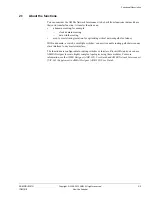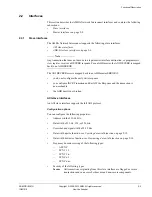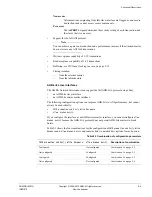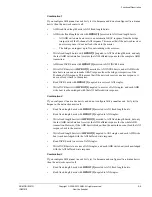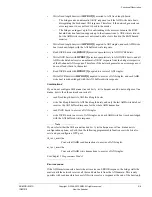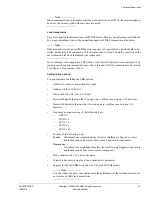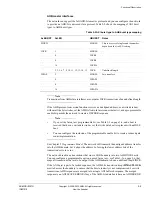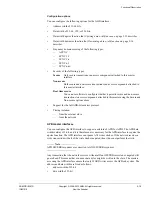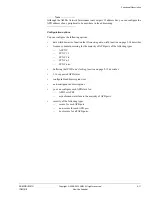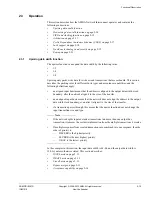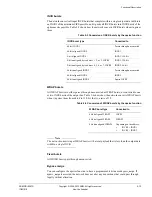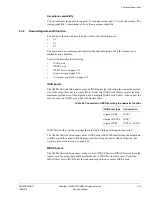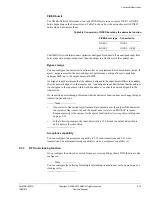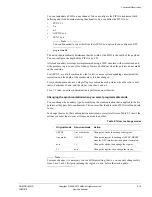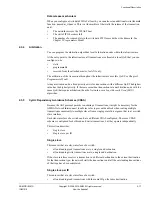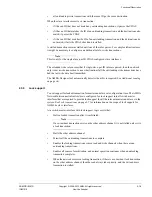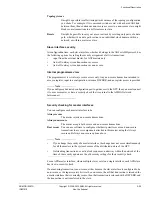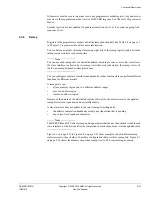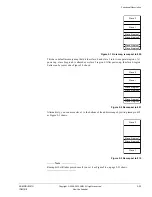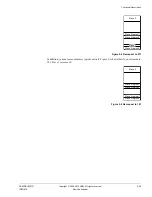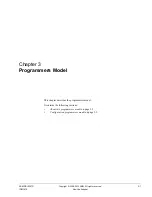
Functional Description
ARM DDI 0397G
Copyright © 2006-2010 ARM. All rights reserved.
2-10
ID031010
Non-Confidential
Configuration options
You can configure the following options for the AHB interface:
•
Address width of 32-64 bits.
•
Data width of 32, 64, 128, or 256 bits.
•
Data width upsize function that
Upsizing data width function
on page 2-12 describes.
•
Data width downsize function that
Downsizing data width function
on page 2-14
describes.
•
Frequency domain crossing of the following types:
—
ASYNC
—
SYNC 1:1
—
SYNC 1:n
—
SYNC n:1
—
SYNC n:m.
•
Security of the following types:
Secure
Only secure transactions can access components attached to this master
interface.
Non-secure
Both secure and non-secure transactions can access components attached to
this master interface.
Boot time secure
You can use software to configure whether it permits secure and non-secure
transactions to access components attached to this master using the Secure and
Non-secure options above.
•
Support for the full AHB-Lite master protocol.
•
Timing isolation:
—
from the external slave
—
from the network.
APB master interfaces
You can configure the APB interface to support a mixture of APB2 or APB3. The APB data
width is always 32-bit, and it is therefore never necessary for the APB interface to require the
upsize function. The APB interface can ignore AXI writes strobes. If the network receives a
write transaction with all of the write strobes negated, then it does not perform the write.
Note
APB SLVERR responses are converted to AXI SLVERR responses.
Any transaction that the network receives without all four WSTRBs asserted or negated still
goes ahead. This means that erroneous data bytes might be written to the slave. The masters
accessing the APB interface ensure that only WORD writes access the APB sub-system. The
address and data widths are fixed as follows:
•
address width of 32-bit
•
data width of 32-bit.







